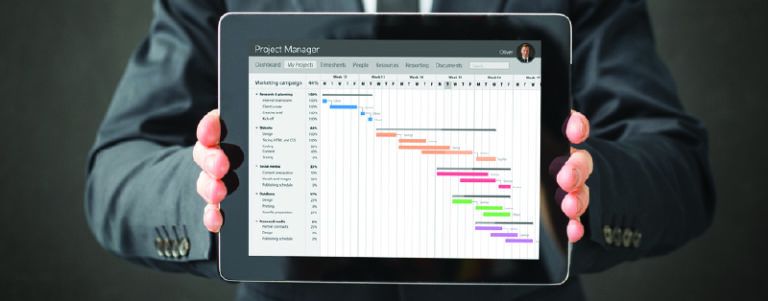The Ultimate Feasibility Study Blueprint For Conquering India’s Vibrant Market

India’s economy has boomed since its 1991 economic liberalization, driven by regulatory changes and foreign investments. The market looks promising, with an average GDP growth rate of 5.5 percent over the past decade and projections of 6.3 percent for FY 2024. India’s 1.4 billion-strong population further strengthens its commercial appeal. To succeed here, businesses must conduct thorough feasibility studies. In this blog, we’ll explore how to navigate the feasibility study process with practical tips and personal insights.
Understanding the importance of a feasibility study is crucial for any business looking to launch a new product or service. A well-conducted feasibility study helps determine the viability of a project before committing significant resources. In other words, it’s like a litmus test for your business idea. This analysis includes evaluating various factors, such as technical, economic, legal, operational, and scheduling considerations.
What is a Feasibility Study?
 A feasibility study examines various aspects of a proposed project. It assesses whether the project is technically feasible, financially viable, and legally permissible. Furthermore, the study aims to uncover potential obstacles and predict the project’s success, clearly showing what lies ahead.
A feasibility study examines various aspects of a proposed project. It assesses whether the project is technically feasible, financially viable, and legally permissible. Furthermore, the study aims to uncover potential obstacles and predict the project’s success, clearly showing what lies ahead.
Components of a Feasibility Study
To break it down, a feasibility study comprises several key components:
- Technical Feasibility: This part analyzes if the project can be executed with the available technology and resources
- Economic Feasibility: Also known as a feasibility analysis, this component assesses the financial aspects, including costs and benefits
- Legal Feasibility: This examines whether the project complies with all legal requirements and regulations
- Operational Feasibility: This looks at whether the organization has the capability to implement and sustain the project
- Scheduling Feasibility: This considers the timeline and ensures that the project can be completed within the desired timeframe
ALSO READ: Why is Quality Planning Important in Project Management?
Poor Feasibility Analysis: Tata Nano’s Failure
The failure of the Tata Nano is a classic example of poor feasibility research. Tata Motors launched the Nano without thoroughly understanding the target market’s perception and expectations. Let’s discuss how Tata Group’s feasibility research failed to observe all these components, which led to the failure of Nano:
A. Technical Feasibility
Tata Motors aimed to create a car with by minimizing costs and using local materials. However, this approach resulted in significant quality compromises. The Nano lacked essential features, such as a passenger-side wing mirror and adequate safety measures, which led to early incidents of the car catching fire.
B. Economic Feasibility
While the Nano was marketed as the “people’s car,” Tata Motors failed in its economic feasibility analysis. The low price point of Rs 1,00,000 was achieved by cutting costs extensively, which impacted the car’s quality and appeal. The initial high sales of around 200,000 bookings did not translate into sustained demand. Furthermore, the car’s reputation as the “cheapest car” deterred potential buyers who associated car ownership with social status.
C. Legal Feasibility
Tata Motors faced significant legal challenges during the Nano’s production. The relocation of the production plant from Singur to Sanand was fraught with legal and political issues, causing delays. These disruptions not only delayed the launch but also added to the project’s costs and complexity.
D. Operational Feasibility
Operational feasibility examines whether the organization can implement and sustain the project. Tata Motors underestimated the operational challenges of producing a high-volume, low-cost car. Consequently, the company struggled with quality control, leading to inconsistent product quality. Additionally, they did not have a robust plan for continuous marketing and customer engagement.
E. Scheduling Feasibility
The production delays caused by the relocation from Singur to Sanand disrupted the launch schedule. The inability to meet production targets further hampered the Nano’s market performance. The projected annual production of 250,000 units fell short, with only 7,591 units sold in 2016-17.
ALSO READ: Building the Perfect Resume for a Project Manager Role
Understanding the Importance of Feasibility Study for the Indian Market
With a population exceeding 1.4 billion, diverse consumer preferences, and varying economic conditions, understanding the feasibility of a project before launch is critical. Here’s why:
1. Navigating Diverse Demography
India’s demographic diversity presents unique challenges and opportunities. Therefore, a feasibility study helps businesses understand regional differences in consumer behavior, purchasing power, and cultural preferences. For instance, what works in metropolitan cities might not resonate with consumers in rural areas. Thus, detailed feasibility research provides insights into these variations, enabling businesses to tailor their strategies effectively.
2. Leveraging Economic Growth
India’s economy has shown robust growth, with a projected GDP increase of 6.5 percent for FY 2024. Consequently, this economic vitality offers numerous opportunities for businesses, but it also demands thorough planning. A feasibility study, including a comprehensive feasibility analysis, helps companies assess market potential, investment risks, and expected returns. By understanding economic trends and consumer spending patterns, businesses can make informed decisions that align with the country’s economic trajectory.
3. Compliance With Legal Frameworks
India’s regulatory environment can be more complex than usual. Ensuring that a project complies with local laws and regulations is crucial to avoiding legal hurdles. A feasibility report examines these legal requirements, helping businesses navigate the legal landscape efficiently. This is particularly important for foreign companies entering the Indian market, where understanding local regulations is essential for smooth operations.
4. Assessing Operational Capabilities
Furthermore, operational feasibility is critical in India, where infrastructure and resource availability vary significantly. Thus, a feasibility study evaluates whether a business has the necessary resources, infrastructure, and capabilities to implement and sustain a project. This assessment helps in identifying potential operational challenges and devising strategies to overcome them. This ensures smooth execution and long-term sustainability.
5. Ensuring Timely Execution
In addition, in a competitive market like India, timely execution of projects is vital. Delays can lead to increased costs and lost opportunities. Consequently, a feasibility study includes scheduling feasibility and ensuring that projects are completed within the desired timeframe. This aspect of the feasibility analysis helps businesses plan effectively, set realistic timelines, and allocate resources efficiently.
In conclusion, conducting a feasibility study is crucial for any business looking to succeed in the Indian market. By investing in thorough feasibility research, businesses can mitigate risks, capitalize on opportunities, and enhance their chances of success in India’s vibrant and dynamic market.
ALSO READ: What Are Best Agile Project Management Courses Online?
Key Steps to Conduct a Comprehensive Feasibility Study
A. Market Research and Analysis
Analytical marketing leader Dan Zarrella believes, “Marketing without data is like driving with your eyes closed.” Conducting a thorough feasibility study is crucial to enter the Indian market. Market research and analysis form the backbone of this study. First, it is essential to understand if there is demand for the proposed venture. This involves analyzing consumer behavior, purchasing power, and understanding regional preferences.
Market research helps identify the competitive landscape, providing insights into existing players and market saturation. For instance, a feasibility analysis can reveal how geographic factors influence market dynamics and overall value. Therefore, this step ensures businesses tailor their strategies to effectively meet specific market needs.
B. Regulatory Environment Examination
In addition to market research, examining the regulatory environment is a critical component of a feasibility study. India’s regulatory framework can be complex, and compliance is non-negotiable. Therefore, businesses must understand the legal requirements and regulations governing their industry. For example, a feasibility report should detail necessary licenses, permits, and adherence to local laws.
This examination helps avoid legal pitfalls that could derail the project. Furthermore, understanding the regulatory environment aids in smoothly navigating bureaucratic processes. Consequently, businesses can plan their operations more effectively and mitigate potential legal risks.
C. Competitor Analysis
Competitor analysis is another vital aspect of a comprehensive feasibility study. This involves identifying key competitors and evaluating their strengths and weaknesses. By doing so, businesses can determine their competitive advantage. For instance, a feasibility study example might highlight gaps in the market that competitors have not addressed.
Understanding competitors’ strategies helps in crafting better marketing and operational plans. Therefore, competitor analysis provides a clear picture of the competitive landscape. Consequently, businesses can position themselves effectively and create strategies that outshine their rivals in the Indian market.
D. Financial Viability Assessment
Lastly, assessing financial viability is crucial for the success of any project in the Indian market. This involves a detailed financial assessment, including costs and potential returns. For example, a feasibility analysis will consider human resources, equipment, materials, and other expenses. Moreover, it will evaluate the financial risks and potential impact of project failure.
A well-prepared feasibility report will provide a clear picture of the project’s financial health. Therefore, businesses can make informed decisions based on solid financial data. This ensures that the project is financially sustainable and profitable in the long run.
ALSO READ: What is a Project Report and How to Create one?
Challenges and Considerations Specific to the Indian Market
 1. Limited Data Availability
1. Limited Data Availability
Firstly, limited data availability poses a significant challenge in conducting a feasibility study in India. Many businesses struggle to find reliable and comprehensive data. Consequently, this scarcity can lead to inaccurate feasibility analysis. For example, without proper data, businesses might misjudge market potential, leading to flawed conclusions. Therefore, companies must use multiple data sources and cross-verify information to ensure accuracy in their feasibility report.
2. Uncertain Market Conditions
The Indian market is prone to uncertain conditions. Economic fluctuations, political changes, and regulatory shifts can impact business projections. Therefore, a feasibility study must account for these variables. This approach helps businesses prepare for different outcomes, enhancing their strategic planning.
3. Overestimating or Underestimating Market Size
Overestimating or underestimating market size is another common pitfall. Businesses sometimes miscalculate the market size due to inadequate research or optimistic assumptions. Therefore, a detailed feasibility report should include a realistic assessment of market size. For example, using conservative estimates and cross-referencing with multiple sources can provide a more accurate picture. This helps avoid unrealistic expectations and strategic missteps.
4. Not Understanding Consumer Needs and Trends
Not clearly understanding consumer needs and trends can derail a project. The Indian market is diverse, with varying preferences and behaviors. Therefore, a feasibility study must delve deep into consumer insights. For instance, a feasibility study example might explore regional differences in product preferences. This understanding helps tailor products and marketing strategies to meet specific consumer needs effectively.
ALSO READ: A 7-Step Guide to Drive Success by Harmonizing Product Manager and Designer Roles
5. Ignoring Competition
Ignoring to study competitors is a critical mistake while conducting feasibility analysis. India’s market is competitive, with numerous players across different sectors. Therefore, businesses must conduct a thorough competitor analysis as part of their feasibility study. For example, understanding competitors’ strengths and weaknesses can help identify market gaps and opportunities. This knowledge enables businesses to position themselves strategically in the market.
6. Conducting the Study Too Quickly or Too Slowly
Timing is crucial in conducting a feasibility study. Doing it too quickly can lead to overlooked details, and doing it too slowly can result in missed opportunities. Therefore, businesses need to strike a balance. For instance, setting a clear timeline with milestones can ensure a thorough yet timely feasibility analysis. Consequently, this approach helps maintain momentum without compromising on quality.
7. Making Incorrect Financial Calculations
Making incorrect financial calculations is another challenge and such errors can lead to disastrous outcomes. Therefore, businesses must ensure accurate and comprehensive financial assessments. For example, a detailed feasibility report should include all potential costs and revenue projections. Such a precision helps in making informed financial decisions.
8. Choosing the Wrong Team
Lastly, choosing the wrong team can undermine the entire feasibility study. The right mix of skills and expertise is crucial for conducting effective research and analysis. Therefore, businesses should carefully select their feasibility study team. For instance, including members with diverse backgrounds can provide comprehensive insights. Consequently, this diversity enhances the quality and reliability of the feasibility analysis.
READ MORE: How Lean Management Theory Helps Reduce Manufacturing Costs
Case Studies of Successful Feasibility Research
1. CRED
CRED, a Bangalore-based fintech startup founded by Kunal Shah, quickly created a name for itself in the competitive fintech space. By targeting credit card users with good credit scores, CRED offered rewards for paying credit card bills through its app, setting itself apart from other apps.
Their journey demonstrates the power of an effective feasibility study example in launching a successful fintech brand in India. By addressing specific market challenges through strategic initiatives, CRED achieved remarkable growth and established itself as a leading fintech player.
Challenges Faced by CRED
- Establishing Trust: Building trust in a market wary of data privacy and financial security issues
- Attracting High-Value Customers: Engaging a demographic accustomed to traditional banking services required novel marketing strategies
Solutions Implemented
- Selective Customer Base: By focusing on users with high credit scores, CRED ensured a reliable user base, making the platform attractive to premium brands and partners
- Engaging Rewards System: CRED introduced a rewards system that incentivized timely credit card bill payments, transforming a routine chore into a rewarding experience
- High-Impact Marketing Campaigns: CRED’s campaigns were designed to generate buzz and enhance brand recognition through viral marketing techniques and celebrity endorsements
Results and Business Outcome
- Exponential Growth: The effectiveness of CRED’s strategies is evident in its impressive growth. The app has witnessed exponential increases in user numbers and engagement levels
- Enhanced Brand Value: By rewarding financial responsibility, CRED boosted its brand value and created a dedicated customer base
- Market Distinction: CRED distinguished itself in the bustling fintech market with its innovative rewards system and strategic focus
2. Zomato
Zomato, a trailblazer in India’s online food delivery and restaurant discovery scene, has cooked up a recipe for success with a secret ingredient: data. By harnessing the power of feasibility study and analytics, Zomato has transformed personalized service into an art form, solidifying its position as a market leader and winning the hearts (and stomachs) of loyal customers across the nation.
Challenges Faced by Zomato
- Fiercely competitive Indian food delivery market
- Numerous players vying for market share
- Maintaining growth while improving profitability
- Low switching costs make customer retention crucial
Solutions Implemented
1. Hyper-Personalized Experiences
- Tapped into vast amounts of customer data
- Delivered highly personalized restaurant recommendations and promotions
- Enhanced customer satisfaction by understanding individual preferences
2. Dynamic Pricing for Optimal Profitability
- Implemented AI-powered dynamic pricing models
- Adjusted menu prices in real time based on demand fluctuations
- Maximized revenue during peak hours and attracted customers during off-peak hours
3. Building a Community of Foodies
- Recognized the power of community engagement
- Fostered a vibrant online community through social media
- Encouraged user-generated content and interactions among food enthusiasts
Results and Business Outcome
- Significant increase in order frequency
- Notable improvement in customer retention rates
- Optimized operations, marketing campaigns, and overall user experience
- Enhanced profitability and higher customer satisfaction
ALSO READ: A Guide to Product Development Process
In conclusion, conducting a thorough feasibility study is crucial for any business looking to succeed in the Indian market. By understanding and addressing the unique challenges, businesses can make informed decisions, mitigate risks, and capitalize on opportunities. Therefore, investing time and resources in a comprehensive feasibility analysis is indispensable for success.
If you’re eager to enhance your project management skills and conduct impactful feasibility studies, explore Emeritus’ online project management courses. Enroll today and take the next step towards business excellence!
Write to us at content@emeritus.org









